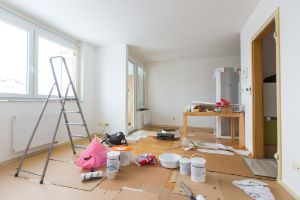
Understanding the sources of indoor air pollution and strategizing effective mitigation methods is critical for maintaining a healthy indoor environment. This is particularly true in commercial buildings where a wide variety of activities and the volume of foot traffic can significantly influence air quality.
Indoor air pollution stealthily compromises health, productivity, and the overall indoor experience in such settings. M3 Environmental LLC specializes in diagnosing and addressing these issues, empowering commercial building owners in Monterey, CA, to foster safer, healthier indoor spaces.
The Invisible Threat: Indoor Air Pollution
Indoor air quality (IAQ) might not always top the agenda in environmental discussions, yet it’s an area of concern that directly impacts our health and well-being. The Environmental Protection Agency (EPA) identifies indoor air pollution as a significant environmental danger, noting that the levels of some pollutants are often two to five times higher indoors than outdoors. These pollutants come from a variety of sources, many of which are commonplace in our daily environments.
5 Common Culprits Of Indoor Pollution
- Chemical Pollutants: From household cleaning agents to paint and office equipment like printers and copiers, chemical pollutants release volatile organic compounds (VOCs) and other toxins into the air.
- Biological Contaminants: Mold, pollen, pet dander, and dust mites contribute to poor IAQ, triggering allergies, asthma, and other respiratory conditions.
- Combustion Products: Burning fuels for heating, cooking, or even from candles and fireplaces can introduce carbon monoxide, particulate matter, and other harmful combustion byproducts indoors.
- Building Materials: Asbestos-containing materials, lead dust from old paint, and formaldehyde from pressed-wood products can severely degrade indoor air.
- Outdoor Air Pollution: Pollutant levels indoors can spike with infiltrations from outdoor air pollution, including particulate matter and industrial gases.
Tackling Indoor Air Quality Issues
Improving indoor air quality involves a multi-faceted approach, addressing sources of pollution directly and enhancing the building’s ventilation and air purification systems.
Optimize Ventilation To Dilute Pollutants
An effective ventilation system is crucial in controlling indoor air pollutants. Enhanced air exchange with the outside can significantly reduce pollutant levels, diluting indoor contaminants with cleaner outdoor air. However, it’s essential to ensure that the air being brought in is filtered to minimize introducing new pollutants from the outside.
Invest In High-Quality Air Purification
Air purification methods play a pivotal role in capturing and removing particles and pollutants from indoor air. Utilizing HEPA filters, activated carbon, and other technologies can significantly improve air quality by filtering out particulates and gases.
Regular Maintenance & Pollution Source Control
Having your air quality tested can help you figure out exactly what measures you need to take, but there are also a few actions that can be taken at any time to help improve your indoor air quality.
- Regularly servicing HVAC systems to ensure they are clean and functional.
- Using natural cleaning products and minimizing the use of aerosols and sprays that release VOCs.
- Maintaining optimal humidity levels to prevent mold growth and control dust mites.
- Choosing building materials and furnishings that emit lower levels of VOCs and other pollutants.
Educate & Engage Building Occupants
Awareness and education about IAQ issues can empower occupants to take proactive steps in reducing their pollution contribution. Encouraging practices like smoking outdoors, minimizing clutter, and reporting mold and water leaks can collectively enhance indoor air quality.
Advanced Strategies For Indoor Pollutant Reduction
Innovative air quality solutions, such as ultraviolet (UV) germicidal irradiation to neutralize biological contaminants and photocatalytic oxidation for VOC destruction, are emerging as effective tools against indoor pollution.
Addressing Specific Pollutants
When you’re dealing with specific air pollutants, it’s important to use a solution specific to it. There’s no one-size-fits-all approach.
Combatting Particle Pollution
Particulate matter (PM), including dust, pollen, and soot, poses significant health risks. Implementing air filtration techniques and regular cleaning protocols can mitigate the accumulation of these particles.
Reducing Carbon Monoxide Exposure
Proper maintenance of combustion appliances, installation of carbon monoxide detectors, and ensuring adequate ventilation in areas where combustion occurs are critical measures to prevent CO exposure.
VOCs & Chemical Pollutants
Using low-VOC products, ensuring ample fresh air introduction during and after using high-emitting products, and utilizing activated carbon filters in air purifiers can help manage VOC levels indoors.
Mitigating Indoor Pollution In Commercial Settings
Commercial building owners face unique challenges in managing IAQ, given the diverse sources of pollutants and the large numbers of people affected. Regular building audits, professional IAQ assessments, and implementing tailored solutions are crucial steps in safeguarding occupants’ health.
Sick Building Syndrome & Indoor Air Quality
Frequent complaints of headaches, fatigue, and irritation from occupants might signal what the EPA describes as “Sick Building Syndrome,” a condition often attributable to inadequate IAQ. Addressing pollution at its source, enhancing ventilation, and ensuring a clean, well-maintained environment are key to overcoming this syndrome.
Get Help To Battle Common Indoor Pollutants
Enhancing indoor air quality requires a comprehensive approach that includes understanding sources of pollution, implementing effective mitigation strategies, and engaging occupants in the process. By taking proactive steps towards pollution control and utilizing advanced air purification and ventilation technologies, commercial building owners in Monterey, CA, can significantly improve the health, comfort, and productivity of their indoor environments.
Trust in M3 Environmental LLC to guide you through improving your building’s indoor air quality, ensuring a safer, healthier space for all occupants.





